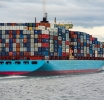
Profit and Floating Profit in Forex Trading
In the world of Forex trading, the term ‘profit’ is the lodestar guiding traders through tumultuous market seas. It is not merely a measure of success but the very goal that traders pursue with each currency exchange. Forex, or foreign currency exchange, is an international marketplace where currencies are traded against each other. Its global significance cannot be overstated; it is the largest financial market in the world, with a daily volume exceeding $5 trillion. The allure of Forex lies in its continuous operation, 24 hours a day, five days a week, offering traders numerous opportunities to profit from currency fluctuations.

Profit and Floating Profit in Forex Trading
Floating Profit and Its Intricacies
Floating profit occurs when a trader’s open positions are in positive territory – when the current price moves favorably away from the entry point of a trade. This type of profit remains ‘floating’ because it has not yet been realized; it exists only on paper and reflects current market conditions. The moment a trade is closed, floating profit transforms into realized profit (or loss), cementing itself as an actual gain or reduction in a trader’s account balance.The contrast between floating and realized profit is quite stark. While realized profit is tangible and affects one’s capital immediately upon closing a trade, floating profit is susceptible to change – it can grow or evaporate as market prices fluctuate.
Factors Influencing Floating Profit
Several factors can influence floating profit in Forex trading:Market Volatility: Sharp price swings can cause significant changes in floating profits within short periods.
Leverage: Utilizing borrowed capital to increase potential gains also magnifies the impact of price movements on floating profits.
Trade Duration: The length of time a position is held can affect the amount of floating profit due to varying market conditions over time.
Traders must remain vigilant, constantly monitoring these factors to manage potential risks effectively. Understanding how these elements interplay with one another allows for more strategic decision-making and better anticipation of potential market shif
Maximizing Success with Strategic Management
To maximize success and manage floating profits judiciously, traders often employ various strategies:Stop-Loss Orders: These are designed to limit losses by automatically closing out trades at predetermined price levels should the market move unfavorably.
Take-Profit Levels: Similar to stop-loss orders but on the profitable side; they lock in profits by closing trades once certain price levels are reached.
Risk Management Techniques: These encompass broader strategies like diversifying trading pairs, using smaller lot sizes, and following trends to mitigate risks.
A disciplined approach cannot be overemphasized when dealing with both floating and realized profits. It requires maintaining emotional control and adhering strictly to one’s trading plan without succumbing to greed or fear.
In conclusion, understanding both floating and realized profits is crucial for informed decision-making in Forex trading. Grasping how they differ and how various market factors influence them equips traders with knowledge essential for navigating the uncertainties of currency markets successfully. By employing disciplined strategies and sound risk management practices, traders can protect their gains or minimize losses effectively – turning potential into actuality with each trade they close.
Forex Trading, Profit Management, Currency Markets, Trading Strategies, Risk Management
Forex Trading, Profit Management, Currency Markets, Trading Strategies, Risk Management









Report
My comments